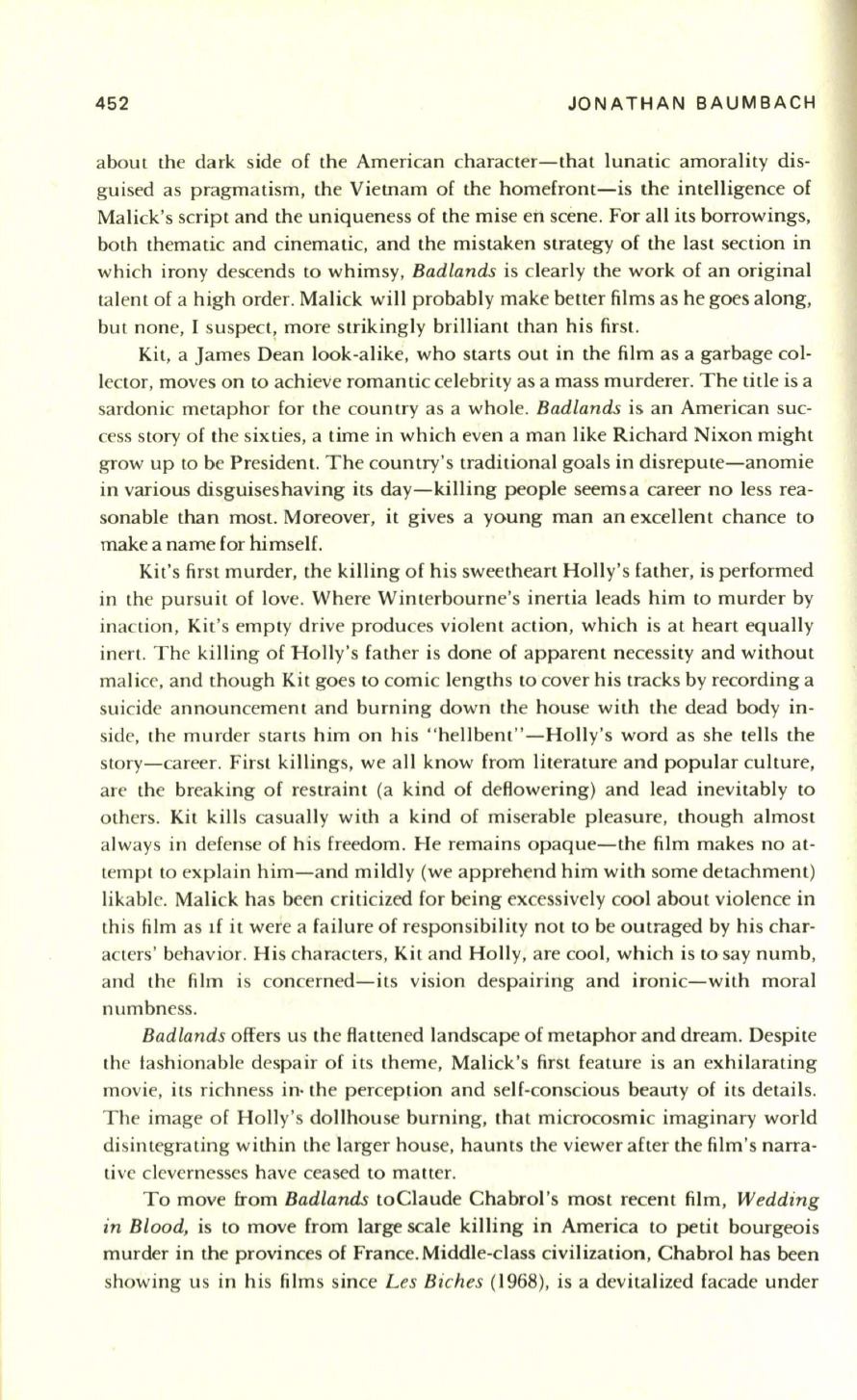
452
JONATHAN BAUMBACH
about the dark side of the American character-that lunatic amorality dis–
guised as pragmatism, the Vietnam of the homefront-is the intelligence of
Malick's script and the uniqueness of the mise en scene. For all its borrowings,
both thematic and cinematic, and the mistaken strategy of the last section in
which irony descends to whimsy,
Badlands
is clearly the work of an original
talent of a high order. Malick will probably make better films as he goes along,
but none, I
suspect~
more strikingly brilliant than his first.
Kit, a James Dean look-alike, who starts out in the film as a garbage col–
lector, moves on to achieve romantic celebrity as a mass murderer. The title is a
sardonic metaphor for the country as a whole.
Badlands
is an American suc–
cess story of the sixties, a time in which even a man like Richard Nixon might
grow up to be President. The country's traditional goals in disrepute-anomie
in various disguiseshaving its day-killing people seemsa career no less rea–
sonable than most. Moreover, it gives a young man an excellent chance to
make a name for himself.
Kit's first murder, the killing of his sweetheart Holly's father, is performed
in the pursuit of love. Where Winterbourne's inertia leads him to murder by
inaction, Kit's empty drive produces violent action, which is at heart equally
inert. The killing of Holly's father is done of apparent necessity and without
malice, and though Kit goes to comic lengths to cover his tracks by recording a
suicide announcement and burning down the house with the dead body in–
side, the murder starts him on his "hellbent"-Holly's word as she tells the
story-career. First killings, we all know from literature and popular culture,
are the breaking of restraint (a kind of deflowering) and lead inevitably to
others. Kit kills casually with a kind of miserable pleasure, though almost
always in defense of his freedom. He remains opaque-the film makes no at–
tempt to explain him-and mildly (we apprehend him with some detachment)
likable. Malick has been criticized for being excessively cool about violence in
this film as
if
it were a failure of responsibility not to be outraged by his char–
acters' behavior. His characters, Kit and Holly, are cool, which is to say numb,
and the film is concerned-its vision despairing and ironic-with moral
numbness.
Badlands
offers us the flattened landscape of metaphor and dream. Despite
the lashionable despair of its theme, Malick's first feature is an exhilarating
movie, its richness in· the
percep~ion
and self-conscious beauty of its details.
The image of Holly's dollhouse burning, that microcosmic imaginary world
disintegrating within the larger house, haunts the viewer after the film's narra–
tive clevernesses have ceased to matter.
To move from
Badlands
toClaude Chabrol's most recent film,
Wedding
in Blood,
is to move from large scale killing in America to petit bourgeois
murder in the provinces of France. Middle-class civilization, Chabrol has been
showing us in his films since
Les Biches
(1968), is a devitalized facade under


